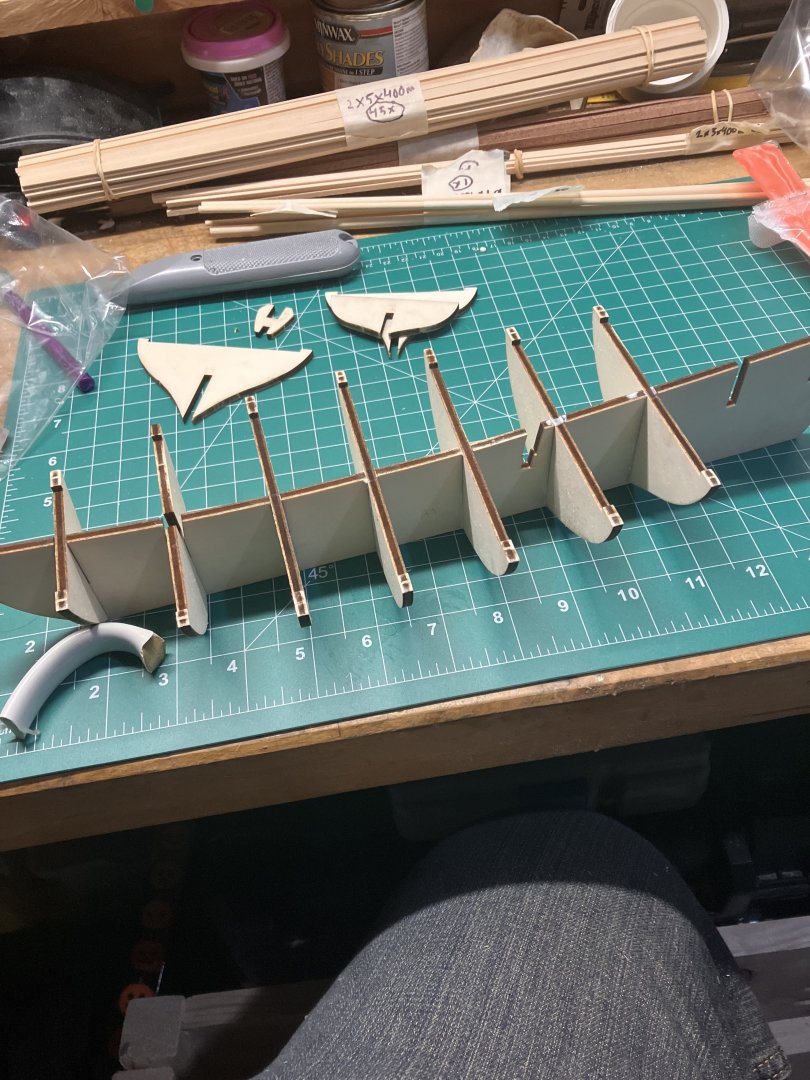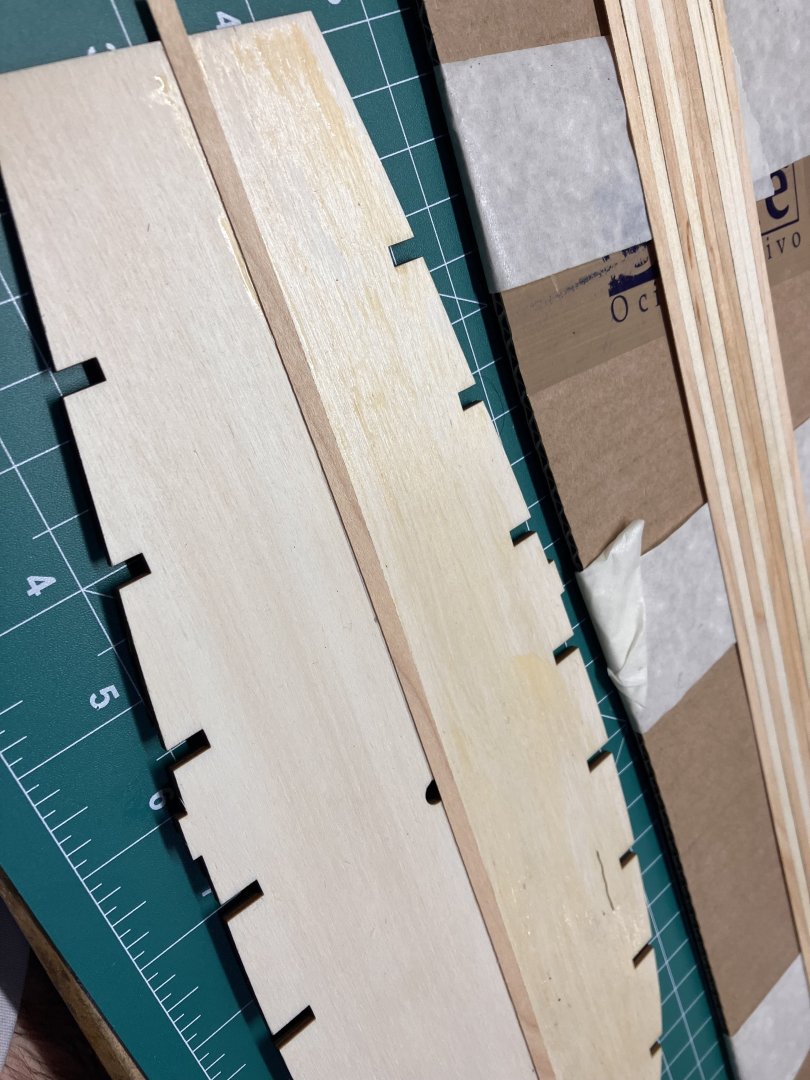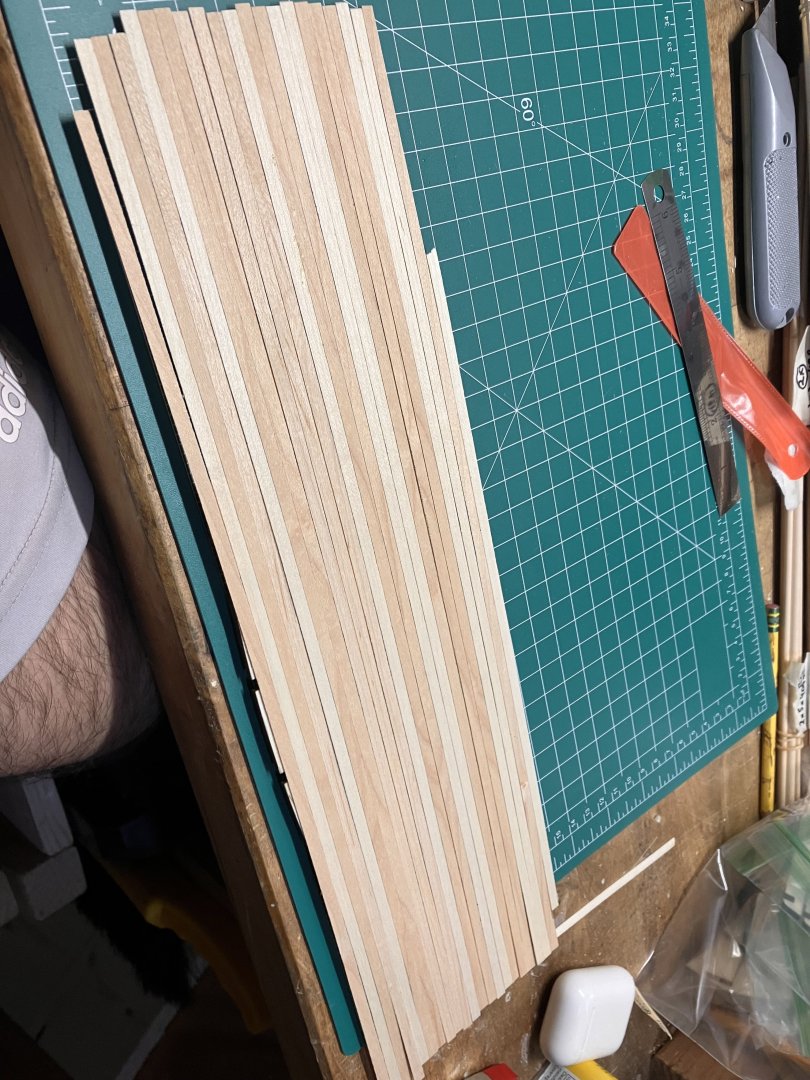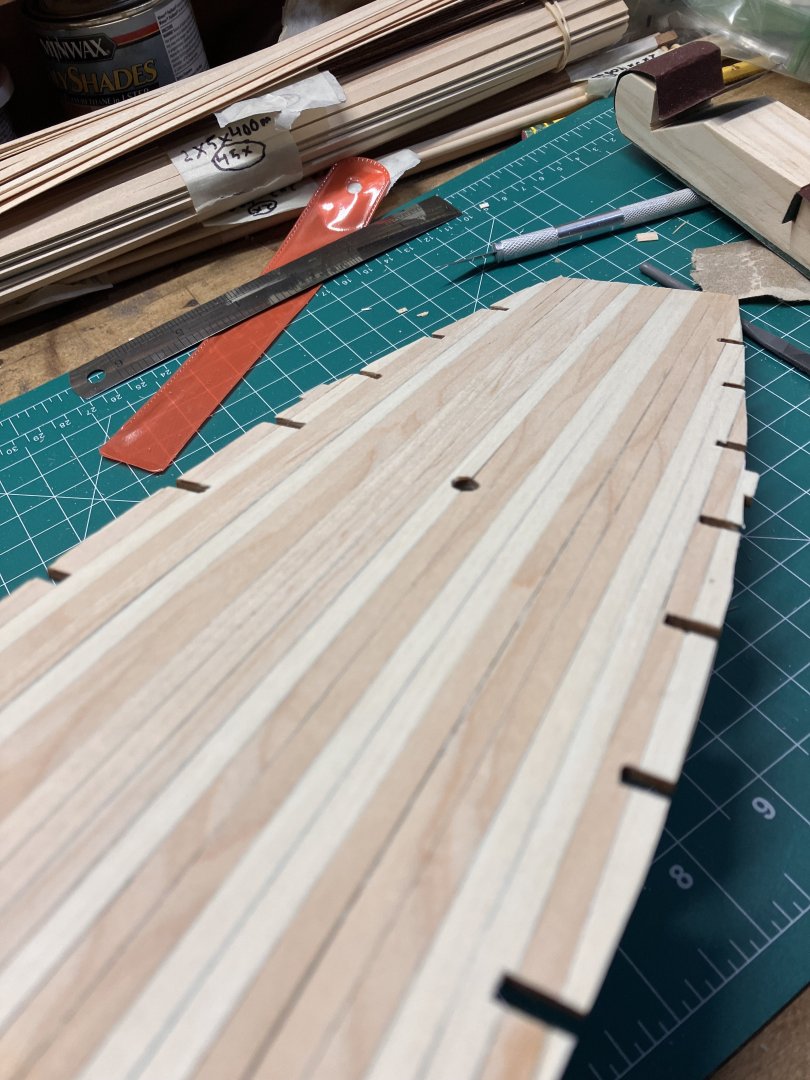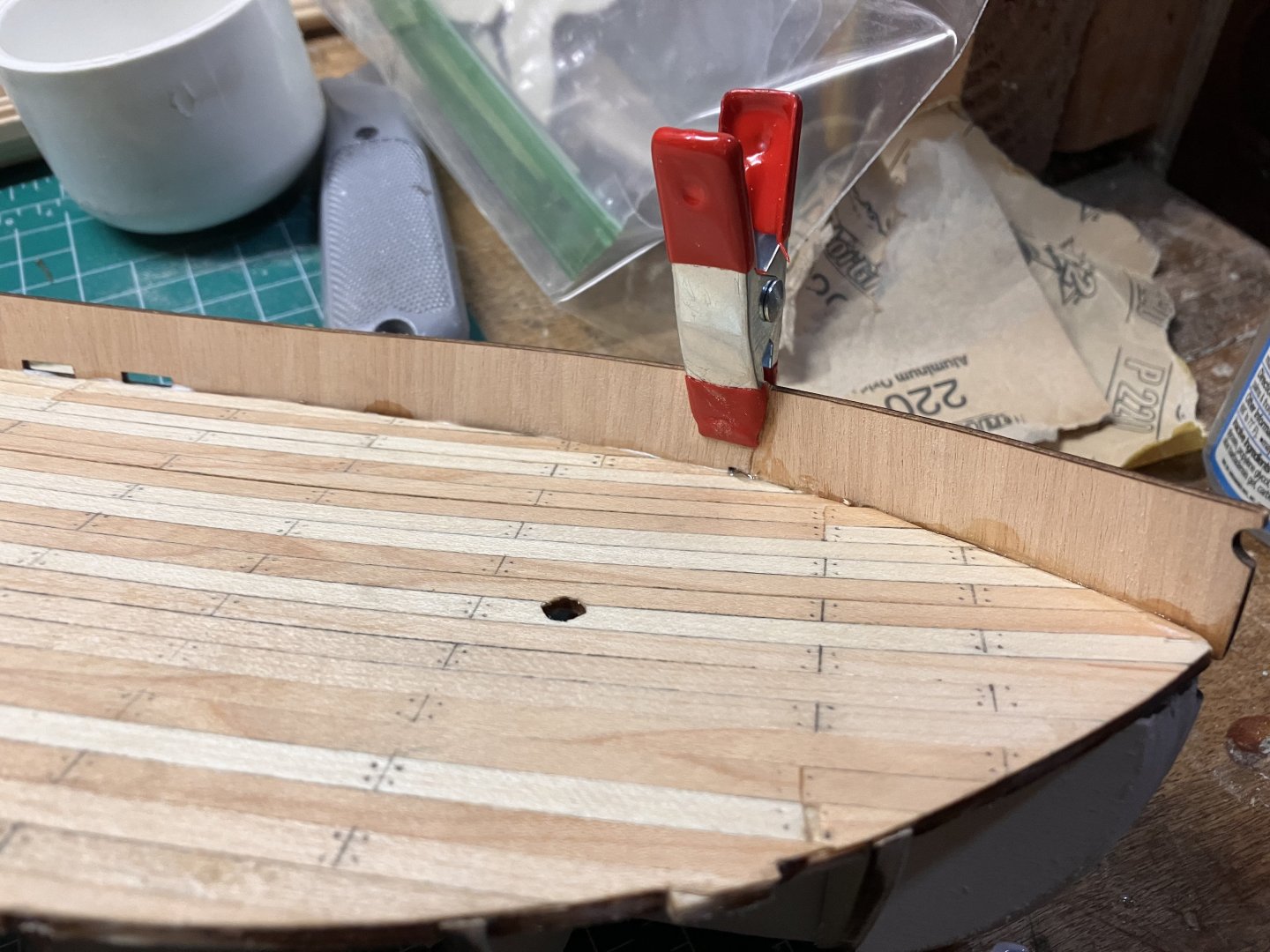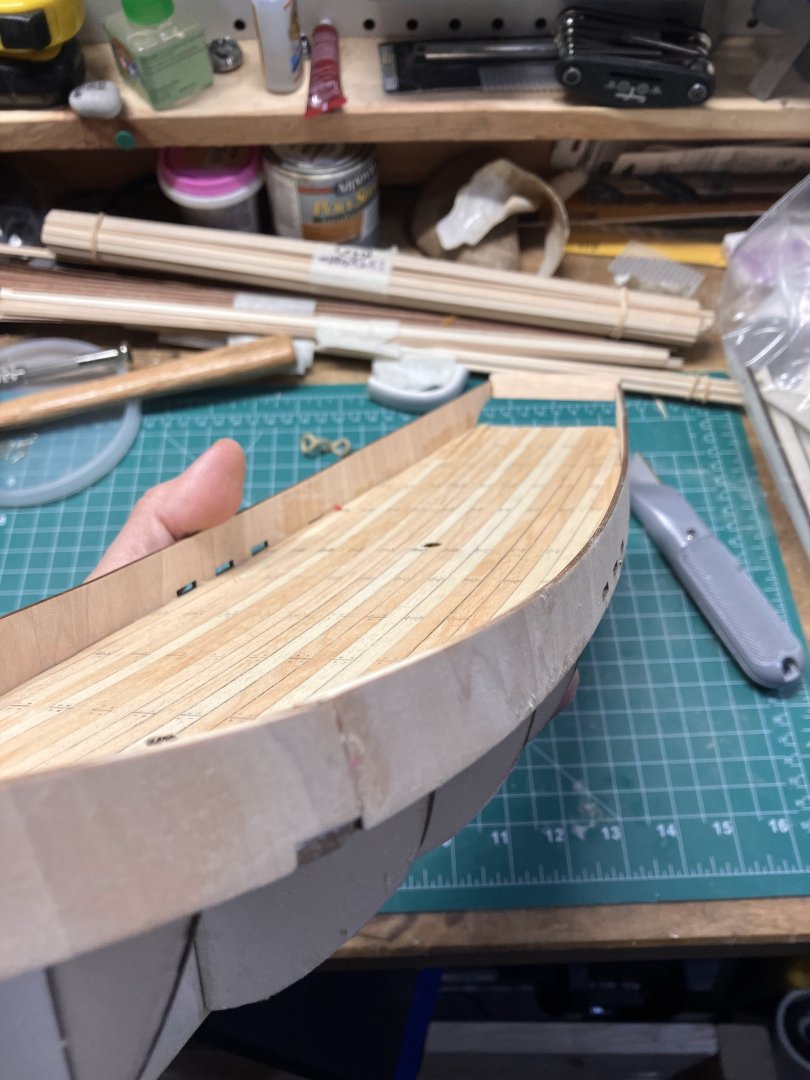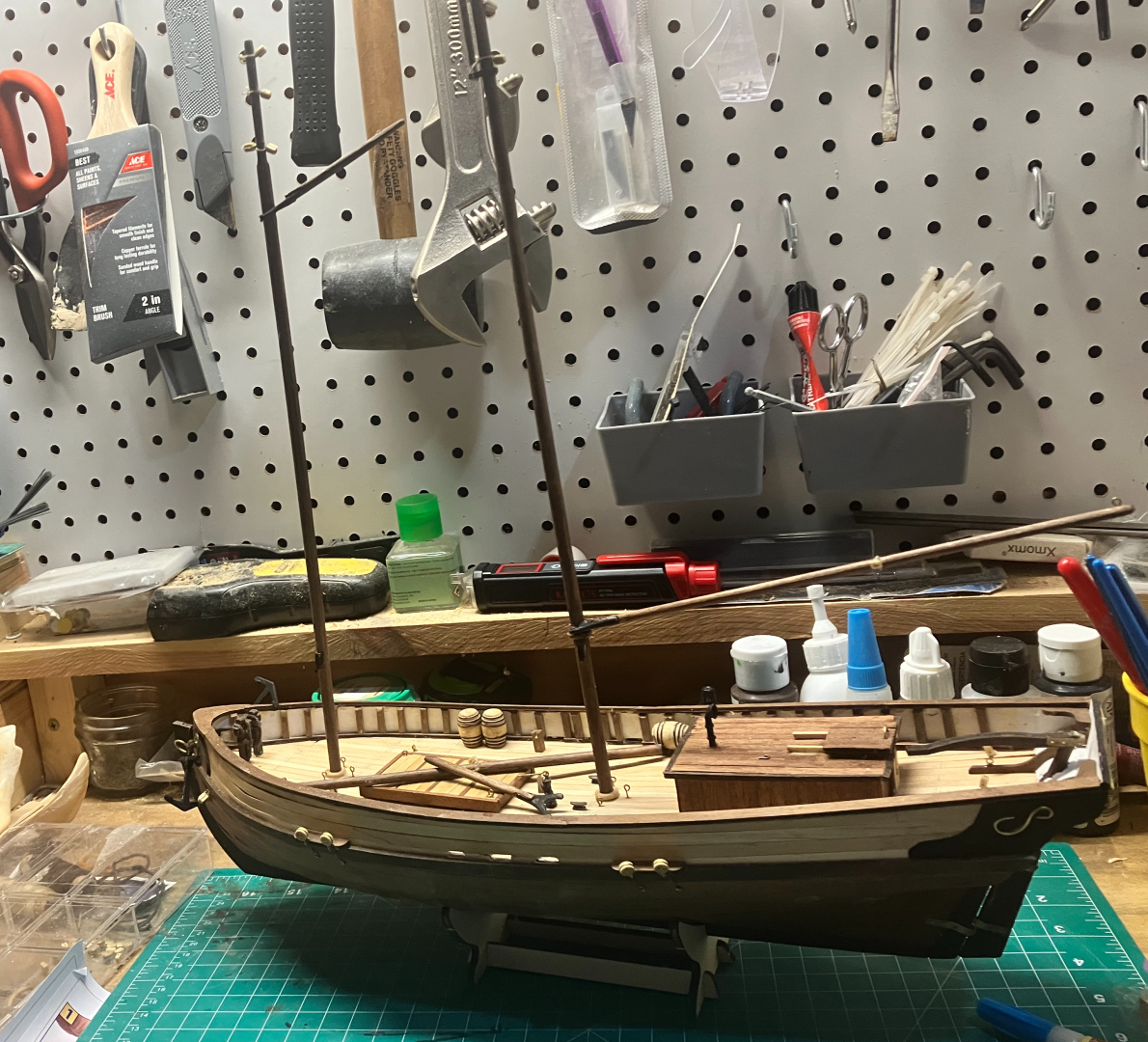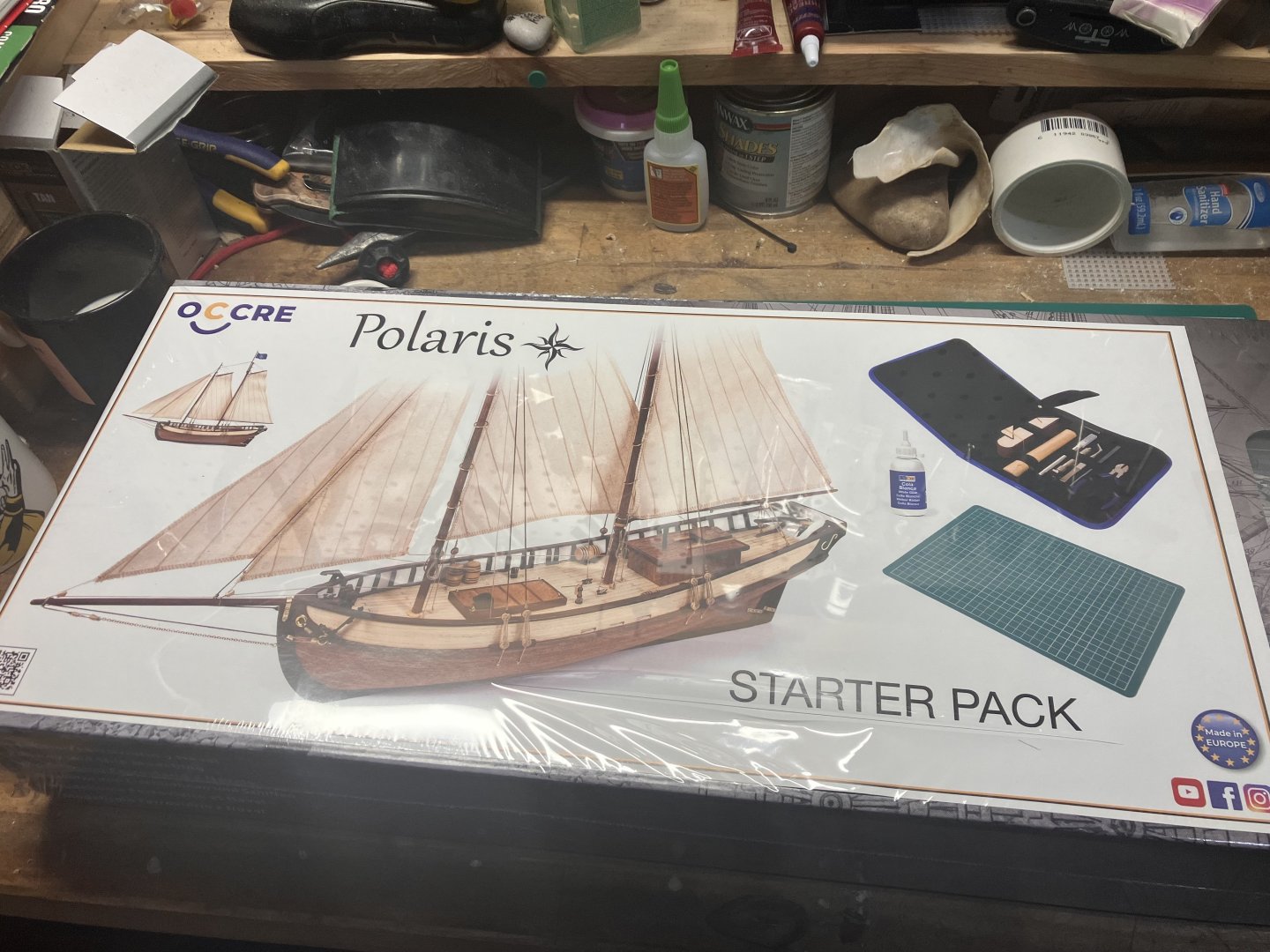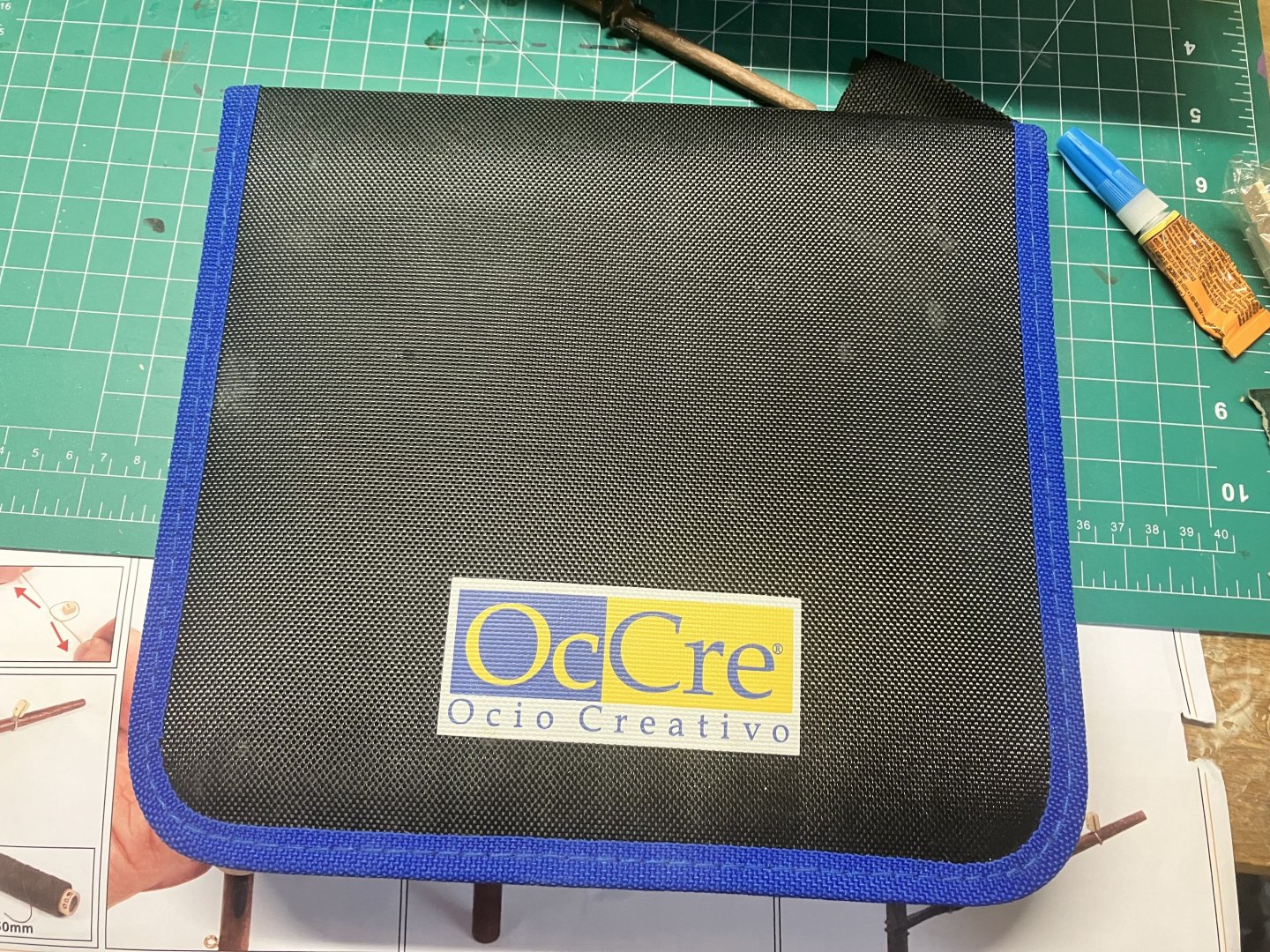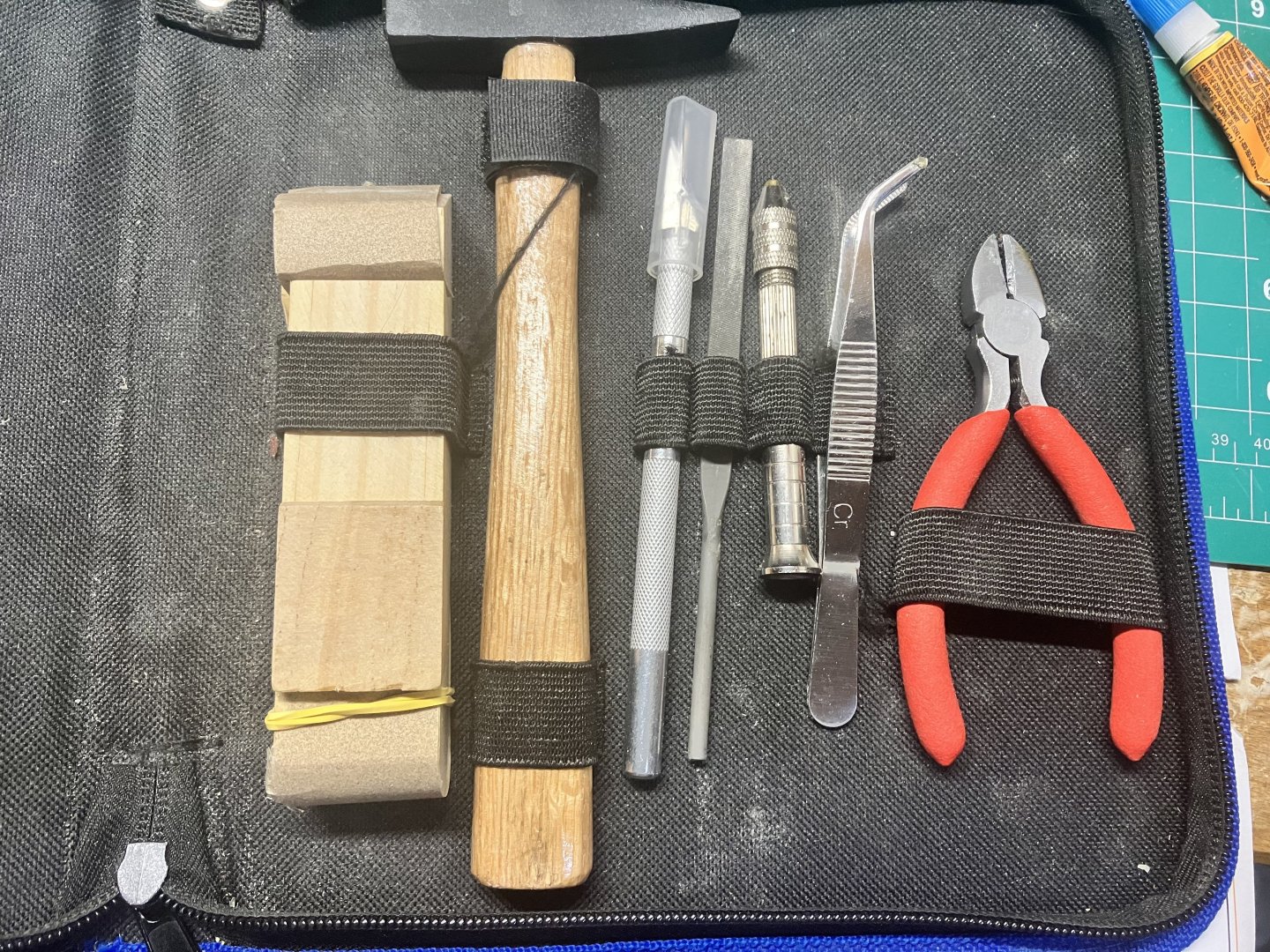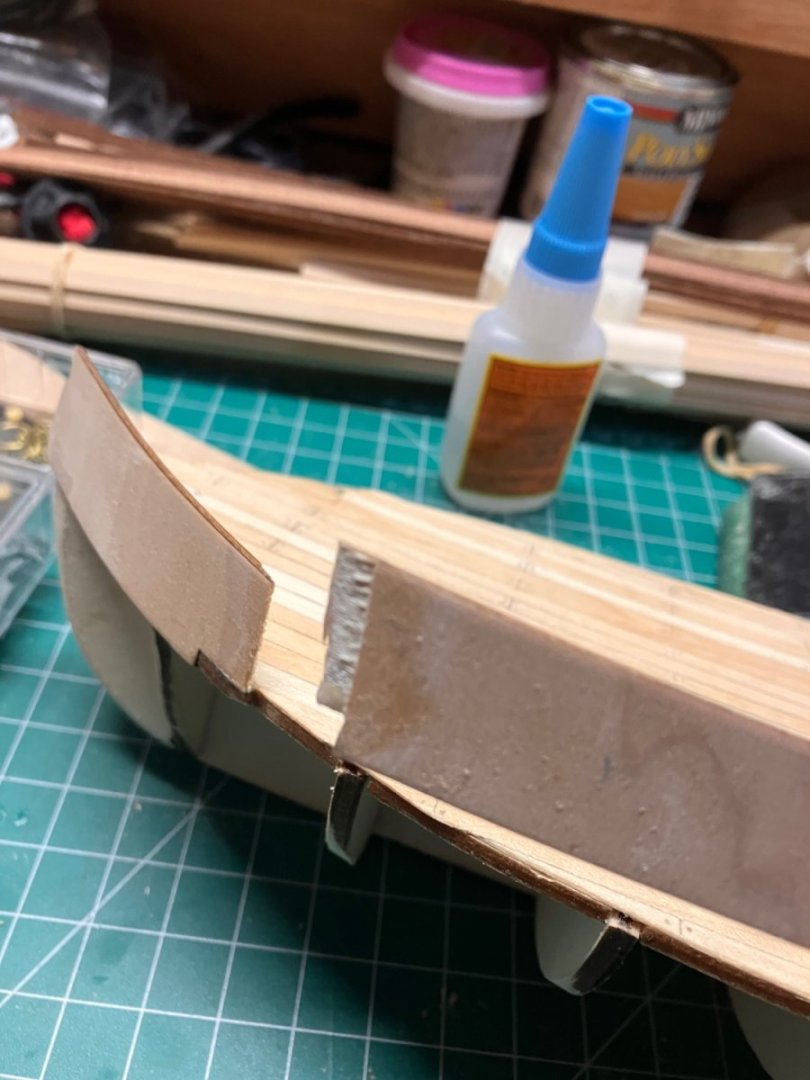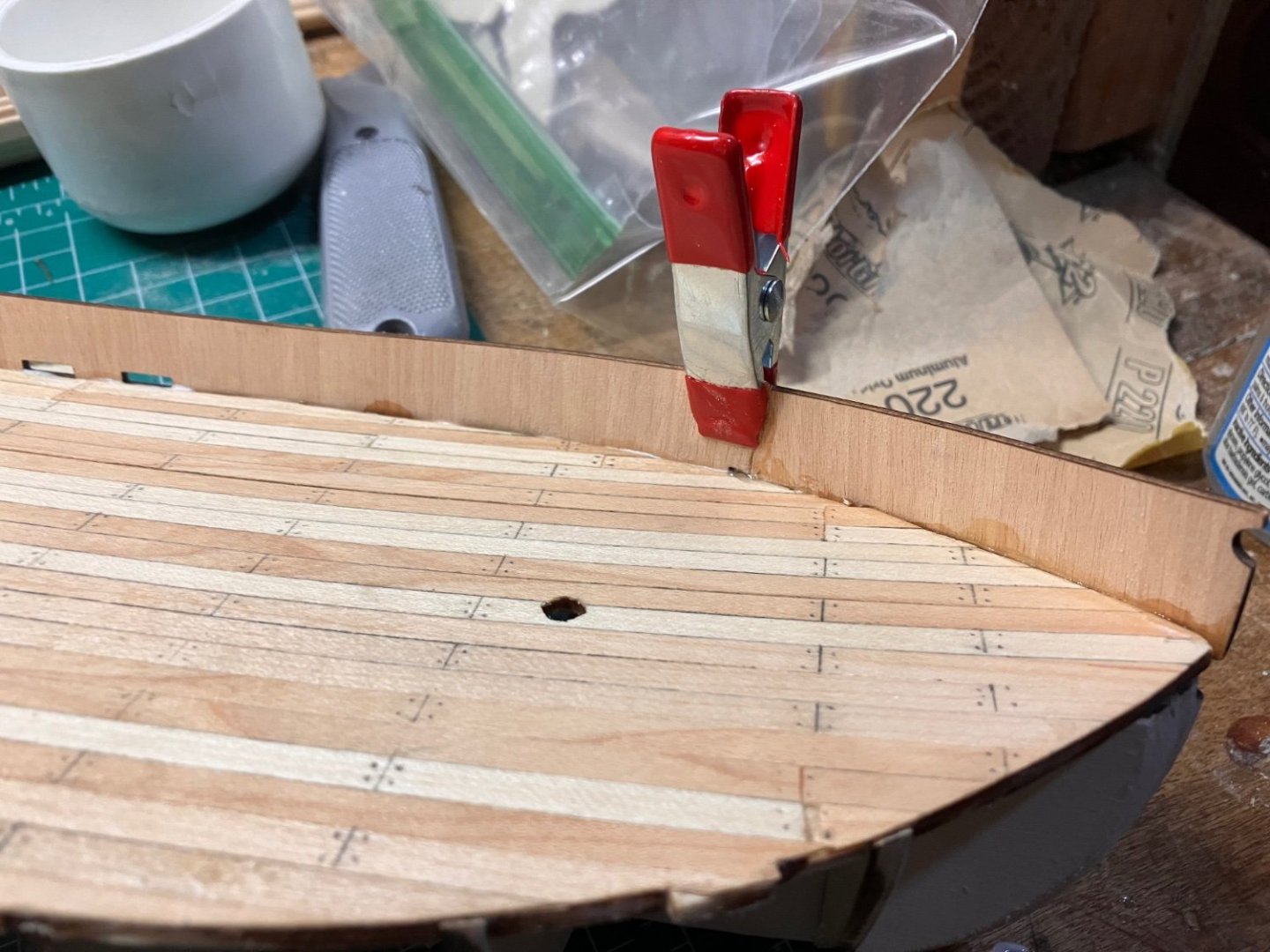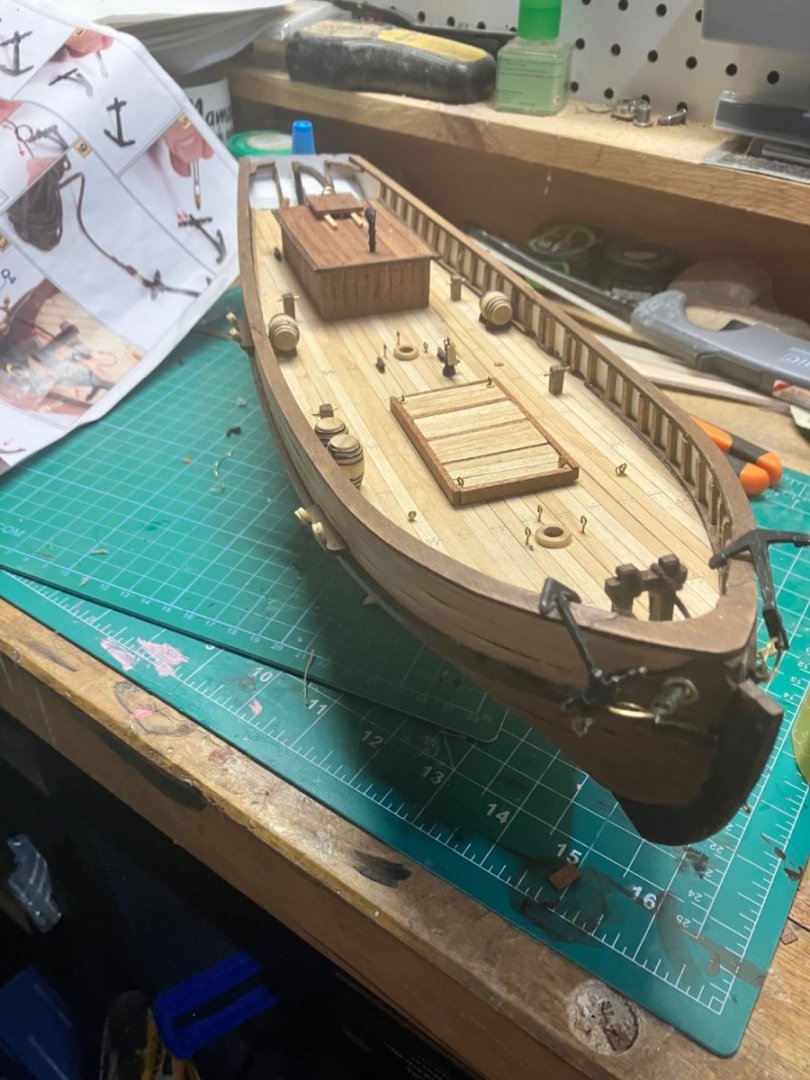
rmccook
Members-
Posts
20 -
Joined
-
Last visited
Recent Profile Visitors
-
 PeSt reacted to a post in a topic:
New to ship modelling? But what do you build first?
PeSt reacted to a post in a topic:
New to ship modelling? But what do you build first?
-
 Old Collingwood reacted to a post in a topic:
Best paint for wooden ship models
Old Collingwood reacted to a post in a topic:
Best paint for wooden ship models
-
 Old Collingwood reacted to a post in a topic:
Best paint for wooden ship models
Old Collingwood reacted to a post in a topic:
Best paint for wooden ship models
-
 rmccook reacted to a post in a topic:
HMS Sophie by TBlack - kit-bashing Jack Aubrey's first command from the Vanguard Models HMS Speedy
rmccook reacted to a post in a topic:
HMS Sophie by TBlack - kit-bashing Jack Aubrey's first command from the Vanguard Models HMS Speedy
-
 ibozev reacted to a post in a topic:
Polaris by rmccook - OcCre - 1:50
ibozev reacted to a post in a topic:
Polaris by rmccook - OcCre - 1:50
-
 ibozev reacted to a post in a topic:
Polaris by rmccook - OcCre - 1:50
ibozev reacted to a post in a topic:
Polaris by rmccook - OcCre - 1:50
-
 mtaylor reacted to a post in a topic:
New to ship modelling? But what do you build first?
mtaylor reacted to a post in a topic:
New to ship modelling? But what do you build first?
-
 mtaylor reacted to a post in a topic:
Advice Needed on Next Build
mtaylor reacted to a post in a topic:
Advice Needed on Next Build
-
 mtaylor reacted to a post in a topic:
New member -- hello!
mtaylor reacted to a post in a topic:
New member -- hello!
-
 Thukydides reacted to a post in a topic:
New member -- hello!
Thukydides reacted to a post in a topic:
New member -- hello!
-
 rmccook reacted to a post in a topic:
Polaris by rmccook - OcCre - 1:50
rmccook reacted to a post in a topic:
Polaris by rmccook - OcCre - 1:50
-
 Ronald-V reacted to a post in a topic:
Polaris by rmccook - OcCre - 1:50
Ronald-V reacted to a post in a topic:
Polaris by rmccook - OcCre - 1:50
-
 rmccook reacted to a post in a topic:
Recommend me a frigate kit?
rmccook reacted to a post in a topic:
Recommend me a frigate kit?
-
 rmccook reacted to a post in a topic:
Polaris by rmccook - OcCre - 1:50
rmccook reacted to a post in a topic:
Polaris by rmccook - OcCre - 1:50
-
Polaris by rmccook - OcCre - 1:50
rmccook replied to rmccook's topic in - Kit build logs for subjects built from 1801 - 1850
Onto the first steps! I opened the box with some trepidation—I’ve never done a kit this ambitious and my youthful model-making involved plastic, which, to me, feels like putting together a puzzle. This felt like I had to build the puzzle pieces AND THEN figure out how to put it together. Cleaned the workbench, got to work and… it went well? Everything I read suggested that attaching the ribs to the false keel could be a little bit nerve-wracking—great opportunity for committing errors that would haunt you down the line. So I approached it slowly and carefully but it really wasn’t bad. Some good quick drying glue, and a square to make sure the ribs were at 90 degree angles made fast work of it. I was suspicious of how well it went, but the deck fit like a glove, so it really was fine. (note that broken coffee mug handle that I was supposed to be gluing back together, which found new life as the perfect stabilizer for a false keel under construction.) Speaking of the deck, this was probably the first big moment—I dutifully glued on the planking and varnished it and then had this moment of, “Wow, that really looks like a wooden deck!” It was like a light bulb, where suddenly it wasn’t a pile of wood, it was going to be SOMETHING, and maybe even something GOOD! I've noticed on some other build logs of the Polaris that people have contemplated (or actually) cutting each plank into smaller sizes instead of just penciling it in, but honestly, I was shocked at how nice I thought it did look. I'm not sure it would have been better by doing each piece individually. That said, I know from my art experience, not all pencils are created equal and you can achieve a great deal by playing with the pencil. I also really liked the lack of uniformity in the deck plank colors. I do suspect that on a British navy ship, the deck was holystoned into perfect uniformity every morning, but my Polaris is no British navy ship! Then came the reinforcements. And I’ll be honest, this is one thing I wish I really could do all over. The instructions are vague about shaping the reinforcements and attaching them to the false keel and have 10 pictures demonstrating. Even my beloved YouTube videos are kind of vague. In hindsight, the instructions and the videos were fine, but I think the thing that was not conveyed was how important it was that the reinforcements be shaped correctly, evenly and with keeping in mind what will be attached. I didn’t know what would be attached, so after industriously doing some sanding and some surveying of my work, I assessed it was pretty good and moved on. Later on, down the line, as I puzzled over my messy stern and troubled bow, I realized it was not “pretty good”. Most of the issues I’ve come across on the build can be solved with a little bit of sanding, some stain and varnish, maybe some extra glue or maybe maybe maybe a bit of putty. This ended up being something that required quite a bit of sanding, putty and varnish to make look semi-acceptable. Again, nothing insurmountable, but next time, I’ll be a lot more thoughtful. Sorry no pics, because I really didn’t grasp the significance, even as I knew exactly what the purpose of the reinforcements was. I’ll end the first step of the log on a happy note—or, rather, what I thought was a disastrous moment, but turned out to be fine. After cheerfully doing a poor job of sanding the shape of the reinforcements and delighting in how well the deck attached, I carefully began work on the gunwales. Occre gives very detailed and useful instructions on how to soak the wood, carefully roll it into the proper shape, and it worked really beautifully for the first side. Then, I got cocky. Thinking I had nailed this, I went a little too fast, tried to attach a gunwale strip that wasn’t really ready and… crack. The loudest crack I’ve ever heard. I thought I had really screwed up. I was gutted and my immediate thought was that it was ruined, because this was not a piece they had extras of, and I wasn’t going to buy a whole new kit just to get this one piece. Then, I did a little googling and found that people seem to have very good experience with getting Occre to send replacement pieces. And then, cool heads returned and I realized I was holding a tube of Gorilla glue, which really fixes every problem in your life you can think of. Applied a little glue, clamped it, took a deep breath and walked away (most problems with the build seem like they can be helped by walking away, at least for a minute.) And… it was fine. All fine. If there’s a reason I broke down and decided to do a build log of what I think is any otherwise unremarkable, or possibly downright sub-par, piece of work, which then has to live alongside logs of things like museum-quality recreations of the HMS Agamemnon, it’s to try and contribute this point—it’s all going to be okay. No mistake is that big of a deal, it can be fixed—and probably easier than you think. And if it can’t be fixed, Occre (or whoever) can help you. Or someone at MSW can suggest a solution. And a thing you don’t realize when you’re a truly new beginner and don’t understand what’s coming next in the build—even if you’ve read ahead in the directions—is that a lot of mistakes are going to be covered. I thought the repair to the gunwale was sturdy enough, but sadly kind of shoddy looking. It didn’t really dawn on me that it was also going to be covered up, so it was the sturdiness that mattered, not the look. So, yeah, it’s going to be fine, just keep going. I’m glad I have, and I’ll share some of those steps soon! Back to building for now! -
Okay, okay okay… here it is, my build log. The background: I’m interested in a lot of things, but I draw, paint, generally like to build things, grew up sailing boats, love the subject of history in general and, as a kid built model planes, laid out elaborate Lionel setups and as an adult like to craft things and have made doll-houses for my kids. I also have found the Aubrey/Maturin books to be a really nice escape. They’re not particularly well-written, they’re overwhelmed with jargon and when you think about it, very few things happen in most of the books, but they recreate a very particular and detailed world in such a comprehensive way that I’ve found them an easy way to immerse myself and shutout various things you deal with these days. A few years ago, reading a particularly dense passage of jargon, I kept flipping back and forth to the generic boat diagram in the front of the book, and I wasn’t finding what I was looking for and wondered if some boat nerd had created some super-detailed diagram or model and posted it online… I did not find any such thing, but a few days later, Instagram served me an ad for Occre models. It was fascinating and surprisingly interesting—I guess not so surprising given my interest in making things, sailing, history, Patrick O’Brien, etc, but I never knew I would find it as interesting as I did. I showed my phone to my wife, joking that if she hadn’t gotten me a birthday present, Instagram’s creepy algorithm knew what I wanted even if I had never known it. Lo and behold, my birthday rolled around and I unwrapped Occre’s Polaris starter kit. Be careful what you wish for! I've been on here for about a year now, lurked for awhile before that and it's been wonderful and helpful. I've asked a few questions, but honestly, so many questions I have were already answered by posts over the years. Truthfully, I resisted this build log. I get the concept, and I really appreciate the logs other people have made, and that’s the reason I finally broke down and did it—the concept only works if we all play the game. But, as I said, I was a little reluctant to bother with a build log because I’ve just really been enjoying bumbling my way through the project and from the start I’ve viewed this project as a learning experience. As long as I complete it, I’ll be happy. I’m now a little past half way done—more details on what I’ve done later—but I’ve completed the hull, the deck and have started the masts—rigging is in the near future. But she's already starting to look like a REAL boat! (those masts are just resting there, I've got a few details to add, and the bowspirit and a few other random bits and bobs are lying on the deck for "safe keeping") I haven’t been very thorough in documenting my progress, and when I went through my camera roll, I was generally unhappy with the quality of the photos and felt like the lighting and my amateurish photography don’t pay my work any compliments (I swear the planking on the gunwale is not as ugly as the shadows make it look above!), but I’ve pulled some pics that are decent and maybe illustrate some of the points of interest. Here’s the thing though… Obviously, I want it to look nice, but I’ll be honest—my boat has some flaws! And I don’t mind! There are some very ugly things that have happened along the way, and through trial-and-error, reading posts here, etc. I’m pretty confident I won’t be making those mistakes again, but mistakes were made. But, you will not, for example, see a close-up picture of the stern because, things got a little wonky and it looks like Hell. Some stain, varnish and attaching the rudder covers up the worst of my sins, but no one needs to see high-res photos of that botch job. In preparing this post, I looked at the pictures and *I* cringed. I learned from it, and as long as I don’t look at the stern, I feel fine abou it. But, I won’t be sharing that disaster! Similarly, planking the hull went well, but as I finished it, I realized I had made some missteps with the shaping the bow and so when I went to place the keel and the prow there were… some irregularities. I think I’ll be talking a bit about that, and my ultimate resolution—which involved basically removing the planking at the bow and patchworking in some new pieces that allowed the prow to fit appropriately. But it’s not one of my prouder moments. A little bit of my reluctance to do a log is that everyone here makes such great stuff and really nails the authenticity. The great work everyone does here is inspiring and I really enjoy looking at such great handiwork, but it can also be intimidating! So it’s tempting to keep it to myself—I’m happy with what I’ve learned thus far, don’t (very much) mind the screwups and am very unlikely to ever show the boat to someone in real life who knows about authenticity or has the expertise (or interest) to notice how botched the planking on the stern is. Frankly, when I finish it, it’s going to go on the shelf above my workbench, and I’m going to look at it fondly as I, hopefully, do better work on more interesting, more ambitious and more authentic projects in the future. I’m not entirely sure my learning-as-I-go project needs to be saved for posterity. But, like I said, it’s the participation that makes this site worthwhile, and when I create some great stuff in the future, it will be nice to have my checkered past documented so we can admire how far I’ve come. No, but seriously, I think one thing I’ve learned from reading everyone else’s threads and posts is that mistakes happen, and it’s rarely the end of the build—solutions have to be found, decisions about how to resolve the problem have to be reached and patches have to be made. And if I had been discouraged by my mistakes, I might not still be working and feeling enthusiasm for finishing and then starting a new project which I will do better work on. So, if there’s a legacy to establish here, I think it should be that new builders should just keep plowing on—very few mistakes can’t be worked through, and this build is proof! And on that note, while I have the floor, and while we’re ruminating on the subject of less-than-perfect builds, every time I’ve dealt with an error, I’ve found myself chuckling thinking about the question of authenticity. The thing that occurs to me, as I build this project is that sailing ships (especially those of old) are kind of a weird paradox of perfection and horrible messes. On the one hand, they had to be engineered quite precisely… a relatively small imperfection in hull shape, the raking of the masts or the weight distribution could make an enormous difference in a ship’s speed, handling, etc. On the other hand, if you know anything about the era, shipyards were horrible cesspools of corruption, ships were rarely (if ever) delivered to spec, bureaucrats meddled with plans, financiers refused to pay for good ideas, tools and systems of measurement were crude, and the boats themselves were constructed with poor quality materials (some shipyards were better, but none were perfect). Those boats often started life as leaky, slow, hard-to-steer, incorrectly rigged, rotting hulks. And went downhill from there. And, few passages ever occurred without a brutal storm, a rock, an iceberg, an accidental collision, etc… and of course, even a famous victory at sea would likely leave the winning ship completely mauled, full of holes, jury-rigged sails, a mess of spliced sheets, missing/misshapen/crudely replaced spars and hastily patched hull planking. Also, everyone who built, sailed or repaired the ships were consuming a gallon of beer and rum, wine or worse, all day, while they did their work. All of that is to say, if we want to be pedantic, the imperfections, the sub-par material and the patched-up bow is authentic. If you think poorly of my work, I’ll remind you that I didn’t sell any of the material Occre sent me on the blackmarket to line my pockets and I was relatively sober throughout the build. How’s that for some expectation setting? Have I set the bar low enough? Good. Let’s do this. Here’s the model—my darling wife bought me the “starter pack”, so that was nice, but probably not necessary for anyone who has some modeling experience. If you’re wondering, the starter pack comes with a tiny cutting mat, a bottle of wood glue and a small tool kit (sanding block, hammer, drill, pliers, tweezers, small file and Xacto knife.) All nice enough tools—the drill bit promptly snapped but for almost nothing I was able to purchase a range of bits in a variety of sizes and seemingly more durable quality. Everything else has been lovely to work with. Sorry, no pics of the materials as they arrived, but I’ll say that everything was in one piece, the cuts were clean, the hardware has all been correct and problem-free and there’s intentionally more of everything that isn’t a laser-cut piece. There’s probably 50 percent more planking (both hulls and deck), there’s lots of extra rigging material, extra hardware, etc. This kit has been my only point of reference, but I haven’t had any major complaints about quality—I’m interested to see the quality of other kits, as I know some of you feel other manufacturers have higher quality. I’m eager to compare, because I do think some of the challenges I’ve had are because of the quality of the material, but none of the challenges have been that bad. For reference, here is a pdf of the instructions. I’ve found them to be extremely clear, the pictures to be very high-quality and appropriately angled, etc. And, as I’ve touted elsewhere, the single best thing about this kit, and why I think it really is great for beginners, is Occre (for it’s other failings) has very good, very detailed, step-by-step YouTube videos for the whole build. I could have done this with just the instructions, but especially on a step I felt apprehensive about, watching an expert do the step first has been a godsend. Highly recommend. All in all, I’ve really enjoyed Occre’s kit as a first project, and I feel like it’s been a great entrypoint that will help me get into some more serious stuff in the future. Interested in your comments, but really, you all are such inspirations to me, and I really am just here to do my part and contribute—and hopefully all of you will keep posting your inspirational work that has been so helpful to me. Thank you guys all so much for that. Okay, that’s the intro—I’ll post some details on the first steps in the next post, but I’ve got an itch to get back to work, so the rest will come later.
-
 rmccook reacted to a post in a topic:
Advice Needed on Next Build
rmccook reacted to a post in a topic:
Advice Needed on Next Build
-
Oh, it must be model building season! I don't know about you guys—I love my model, but somewhere around March, I suddenly stop finding it so fun and then somewhere around now, all of a sudden I notice it and I start spending every night toying with it. It happened last year too—got the model in January, toyed with it until March, set it aside, and came back to it about Oct 1. I was wondering when I would be seized with interest again (I knew I'd come back to it), and I cleaned up my workshop a few weeks ago, moved all the summer projects and tools out of the way, stowed the garden stuff, etc. and have been eyeing the half-completed model, thinking about what needs to be done. I stopped last spring just before starting the rigging, which seemed a natural stopping point, but I wasn't intending to stop for six months, and then the other night, not sure why, I sat down and started in on it again, promptly glued my fingers together, realized that six months ago I put some cleats on the wrong side of a mast—like I never left. Anyway, we're off again! Next step, of course, was to start posting here and begin browsing kit listings and imagining what I should do next before I finish what I've already started. Hope you all had a good summer!
-
New to ship modelling? But what do you build first?
rmccook replied to MSW's topic in Wood ship model kits
There are a lot of great suggestions and I, as a relative newcomer, am not at all an expert on which brands are better, but I'll put in a vote for Occre. I know it's not a beloved brand around here because, as I understand it, the quality of the materials isn't maybe the best and some of the models aren't super authentic. Without experience with other brands, I can't say how the quality compares (I'll return here when I've gotten a shot at the Vanguard models, which everyone seems to agree is great quality) but I haven't had any unfixable issues with any of the materials. Also, while most people (and definitely my wife) would argue that I'm way too interested in models/sail boats/Napoleonic wars, I'm definitely no expert on historical authenticity, so I can't comment on that either. The good news is that, not being an expert, I have no idea what's wrong! All joking aside, if I were going to be investing real money—ie, north of $350—in a model, I would expect some serious authenticity, but I also don't think a beginner should be spending that much anyway. What I do like about Occre is that it has A LOT of instructional help. The written instructions are very clear. The diagrams are very clear and easy to use. Every step is documented in very clear, crisp color photos that—and this is important—have clearly been shot with a lot of thought put into what angle would be most useful. But the thing that, as a beginner, has been most useful to me, and probably doesn't occur to a lot of the more experienced hands here because they don't need this kind of thing, is that Occre has YouTube videos that show in great detail every step. It's such an enormous help, especially when you're about to take a step that you know might really go wrong, or that you're nervous about going wrong. Even if you don't decide to do it the way that is demonstrated, having a well-shot visual of what it is supposed to look like, how it's supposed to fit, etc. is really priceless. I know they're not unique in the clear illustrated instructions (Vanguard's also seem very useful and extensive, for example), but I haven't seen any other examples of instructional videos. I haven't decided what my next project will be—someone pointed out the Vanguard's Alert and it is very pretty—knowing there's really detailed video tutorials to go along with instructions, would give me some confidence to tackle something a bit more ambitious. -
 rmccook reacted to a post in a topic:
OcCre HMS Victory Limited edition
rmccook reacted to a post in a topic:
OcCre HMS Victory Limited edition
-
The HMS Alert is such a pretty little boat. I really do like it.
-
 rmccook reacted to a post in a topic:
Advice Needed on Next Build
rmccook reacted to a post in a topic:
Advice Needed on Next Build
-
 rmccook reacted to a post in a topic:
Advice Needed on Next Build
rmccook reacted to a post in a topic:
Advice Needed on Next Build
-
Anyone have a link to this post--shockingly, searching "frigate" isn't helpful, but I'm in the same boat as Burgundy, looking for my next kit and loving the idea of a frigate, but interested to hear the reasons I shouldn't.
-
 rmccook reacted to a post in a topic:
Advice Needed on Next Build
rmccook reacted to a post in a topic:
Advice Needed on Next Build
-
The bow is tricky and that’s the one area they don’t show very clearly in either the manual or the YouTube videos. And it’s crucial, because if you read ahead, the keel has a bow piece that has to fit in perfectly in that notch and sit flush with the hull. It was the hardest part so far, but sanding, cutting, swearing, regluing, more sanding, more swearing, walking away for a week, etc finally got it in. I’d say Just keep it as neat as possible at the front so it’s all uniform if you do have to make any alterations to make the piece fit.
-
Mine broke too… the good news is it glues easily… I worried it looked terrible and spent time sanding, etc and only later discovered it’s covered up on the outside and painted and partially obscured on the inside. Same thing with the planking - a second layer is going to go on, so it’s important for it to hold together and be smooth. But, aesthetically, it’s not super important if there are errors. You can slice and splice in planks, as long as it’s sturdy and the correct shape. Now, if you’re like me and you break planks on the second layer, where they are much thinner and delicate, or don’t make clean cuts, which leaves it looking ragged, it’s more of a problem. I had to peel off a number of garbage looking outer layer planks and fit in new ones, particularly on the bow as I tried to fit the keel piece on… it definitely wound up looking a bit patched and I thought I had ruined it… but some obsessive sanding and varnish REALLY goes a long way. I probably won’t post a picture of THAT after seeing the gorgeous work some people do around here, but it looks acceptable to the naked eye, that is not inspecting it too carefully, which most eyes won’t since this model is probably going to live above my desk or workbench. It all *mostly* was okay, but most importantly, now I know what’s important to pay attention to on my next model (don’t ask me about the next one yet, I’ve got to get through the rigging). The other thing I’ve read (here on MSW) is that OcCre has very good customer service and if you do irreparably break/lose something they will be very helpful in replacing. And when it comes to things like planks, copper wires, thread, little eyelet hardware, they seem to have packed a significant number of extras. Even when I had to discard planks I really botched I had plenty to spare and now that I’m down with the hull and deck, I probably have enough leftovers to do another half side of a hull, if I needed to.
-
Informative video about 18th Century Sailing Battleships
rmccook replied to Peanut6's topic in Nautical/Naval History
I was going to post but thought to check if someone had... since you posted, it's been very popular. It's one of the clearest, most concise explanations and answered a lot of questions about how all that fit in such a small space. -
Welcome! I've just finished the first book of instructions (the hull part) for my Polaris and am stalling work on the mast and rigging. It's a fun kit! I've found OcCre's manual extremely clear and easy to use, but the YouTube series they have for each step has been INCREDIBLY useful. Sometimes you just need a different angle, or watching someone do some tricky little thing that you just can't show in even the most detailed instruction or clear photo. I've also noticed that the videos slightly deviate from the manual, but always in ways that get it done. My biggest piece of advice (as someone barely ahead of you) is that you should not be afraid to make mistakes, because you will make a lot of them, but almost all of them can be fixed with some sanding. AND, I've discovered, most of the mistakes I really worried about ending up being completely inconsequential because they were covered up. I did not take shaping the bulwarks in the bow very seriously and ended up really worrying about it, but by the time the two layers of planking were on, sanded and stained, you'd have no idea something was amiss. It certainly is uneven in its shape in a way that would matter tremendously if it was a real boat trying to sail anywhere, but to the naked eye it can't be seen and it sits levelly in the stand. Same with the bow—really stressed over how the planks were coming together at the front, how it would all feet with the front section of keel, etc. and sanding, a small amount of wood-filler, and stain made my mistakes barely perceptible and now mostly covered by the anchors. Good luck!
-
great looking boats! How did you ship them safely when you went overseas?
-
Well, again, it’s definitely not for a beginner. And it’s pretty clearly marketed as for someone with “expert” ability. Having a wider tolerance for authenticity doesn’t mean you’re necessarily a beginner - there’s probably a big part of the model ship market who just enjoys the challenge of putting together a complex project. Good for them, and good for OcCre if they can get $1700 out of them. And if there is some hypothetical random person with $1700 burning a hole in their pocket who sees that kit as their entry point into model ship building… well, someone was going to separate them from their $1700 might as well be OcCre. If they impulsively spend THAT much money on a model ship kit they have no experience doing anything like, it doesn’t sound like they were going to be much of an asset to the community anyway - they were just as likely to stumble into a sporting good store and buy a set of golf clubs or something. Frankly, if it keeps a model ship kit company in business seems fine to me. But I also think what’s really going on, if you read the marketing material, the justification for the price seems to be the “exclusivity” of it - the limited quantity and the numbering of each model, accompanied by a coin, etc. I find people who are interested in that sort of thing completely mysterious, but there are plenty of people who LOVE the idea. It doesn’t appeal to me, for a variety of reasons, but mainly the open hull, but I think it’s for people who have enjoyed OcCre kits before, want a complex challenge and are motivated by the collectors item shtick.
-
Would it really be authentic if it showed up perfectly built and no need for reworking? I mean, what's more authentic than a British warship that turns out from the shipyard with questionable construction technique, incorrect fittings and poor quality materials? They should include a scale Admiralty inspector, with little notes stuffed in his back pocket looking the other way and then you can call any problems with hatches, sails and pins authentic! $1700 kit price and 6,000 pieces... it's not for beginners.
About us
Modelshipworld - Advancing Ship Modeling through Research
SSL Secured
Your security is important for us so this Website is SSL-Secured
NRG Mailing Address
Nautical Research Guild
237 South Lincoln Street
Westmont IL, 60559-1917
Model Ship World ® and the MSW logo are Registered Trademarks, and belong to the Nautical Research Guild (United States Patent and Trademark Office: No. 6,929,264 & No. 6,929,274, registered Dec. 20, 2022)
Helpful Links
About the NRG
If you enjoy building ship models that are historically accurate as well as beautiful, then The Nautical Research Guild (NRG) is just right for you.
The Guild is a non-profit educational organization whose mission is to “Advance Ship Modeling Through Research”. We provide support to our members in their efforts to raise the quality of their model ships.
The Nautical Research Guild has published our world-renowned quarterly magazine, The Nautical Research Journal, since 1955. The pages of the Journal are full of articles by accomplished ship modelers who show you how they create those exquisite details on their models, and by maritime historians who show you the correct details to build. The Journal is available in both print and digital editions. Go to the NRG web site (www.thenrg.org) to download a complimentary digital copy of the Journal. The NRG also publishes plan sets, books and compilations of back issues of the Journal and the former Ships in Scale and Model Ship Builder magazines.




